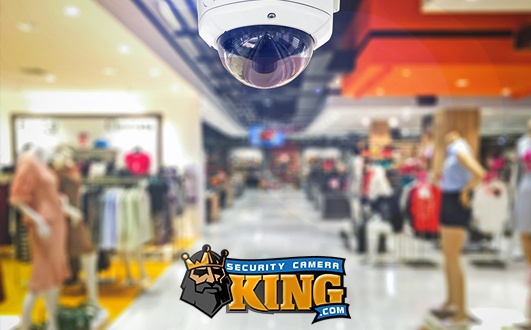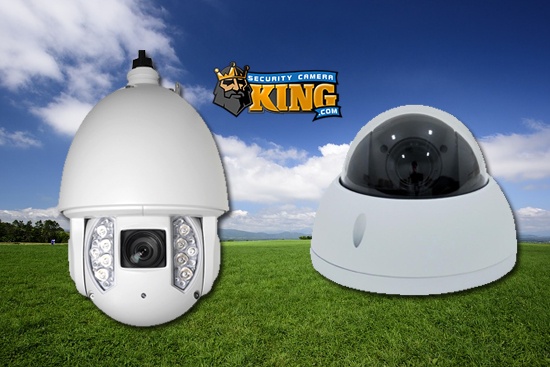COAX Cameras in 2022 by SCK
As the year comes to a close, many are wondering if it’s still worth using or looking into COAX cameras in 2022. SCK has 5 reasons to use COAX cameras in 2022, and beyond!
Now, the reason you’d be using COAX cameras in 2022 over says, an IP-based system, is going to be situational. Both technologies are viable, and your needs will determine which tech will work for you. Read on, and check out our video at the bottom of the page to learn more!
COAX Cameras have been around a long time- much longer than their IP counterparts. In fact, they used to use exclusively use analog signals to transfer their video data and had extremely poor resolution standards compared to today’s technology. Today COAX cameras can now transfer audio, video, and other data right over the COAX cable as a digital HD signal. COAX cameras are still widely used throughout the industry and most existing Closed Circut Television (or CCTV) systems that have been around and still going since as soon as the early 2000s are likely to be COAX-based systems. Check out our video, and/or read on to find out how COAX cams can be beneficial and are still a very relevant technology even today!
Coax cameras are almost universally more cost-effective than their IP counterparts. Often, a comparable coax camera will run less than half of the price of an equal quality IP camera. While IP cameras have a lot of onboard technology that allows them to do many things right on the camera- COAX cameras don’t need this extra hardware as the DVRs they work with handle all the processing they need. without the additional processing hardware and network technology found in IP cameras, coax cameras can be manufactured to perform the same or similar jobs for substantially less. This cost is then handed down to the consumer. Dealers and Installers tend to see the most benefit from this as the cost of a large number of cameras over manny jobs adds up fast! With the lower cost of COAX cameras, an entire job can be sold for thousands less and accomplish the same, or close enough to the same goals rather than going with IP.
Ease of Labor on existing installations (this rolls into cost too!)
As we mentioned above, COAX has been around a lot longer than IP cameras. we also mentioned that because of this, many existing installations and systems currently in use right now are already COAX. This means an installer has already done the work of running much of the following cables for video, audio, PTZ controls, and power. The amount of time and labor spent running brand new cables can be very hefty, and require modifications to existing land or construction that may not be welcome or desired. When one of these older systems breaks down, or simp;y is old enough that its time to upgrade- being able to utilize the existing infrastructure rather than quoting, and performing new cable runs can be the difference in cost and time between landing the contract for that job or not. As mentioned above Cost is key, and since labor, materials, and time translate to cost you can look at reason #2 as an expansion of reason #1. but outside of cost and time, it is just easier to work with existing cabling. This means even if you are not an installer, and simply redoing your own system, COAX might be the way to go if you have the cables already run.
COAX now hits 4k!
It’s true that IP cameras are generally considered first when we are talking about really advanced features- including super high resolution or image quality. This has since changed and nowadays COAX cameras are catching up in image quality to the IP world. For a long time the best image quality you could expect to get from a COAX camera was 720p, and soon after 1080p – also known as 2 megapixels- became the COAX industry standard. We are happy to say that this is now even further, as we feature COAX cameras that can record all the way up to 4k – or 8 Megapixel- resolution. That’s right, no more is COAX held back by the image quality, 4K is here to stay and is completely possible now even with a totally COAX setup.
Far less cross-brand compatibility problems than IP
Currently, there are a lot of different CCTV manufacturers on the market- and it can be unclear what products from which manufacturers are compatible with each other. This issue is particularly present with IP cameras, which often feature an ‘exclusive’ level of compatibility and feature use when paired with recorders from the same manufacturer. The ONVIF protocol was designed to allow cameras to properly communicate across brands- but it doesn’t always work 100% of the time or offer every feature or option to be available. Since COAX cameras simply take in audio and video and send that data to the recorder for processing0 they don’t often have this problem with brand crossing if at all. This means that while an IP camera from brand A, might not work with a recorder from Brand B- you won’t have to really worry about this at all with COAX cameras and can simply look for the best price for the camera type you need, without worrying your purchase won’t function as intended.
Less, or even zero network utilization.
Unlike IP cameras that communicate digitally over the network- Coax cameras simply send an isolated video signal directly to the Recorder. This means you won’t be forced to crowd your existing network with extra data- or be forced to build a second network to avoid the bandwidth clog. You’ll only have to consider the bandwidth used by the system if it sends data over the web, like to your smartphone.
There are plenty of reasons to consider COAX cameras- but these were our Top 5. If you enjoyed the video, don’t forget to hit that like button and subscribe for more content! For more information on IP cameras, pricing or compatibility- don’t hesitate to give one of our Sales Pro’s a call at 561-288-5258.
Also, Find us on: Facebook | Twitter | YouTube
Check out our 2MP/1080p COAX Series Cameras!












